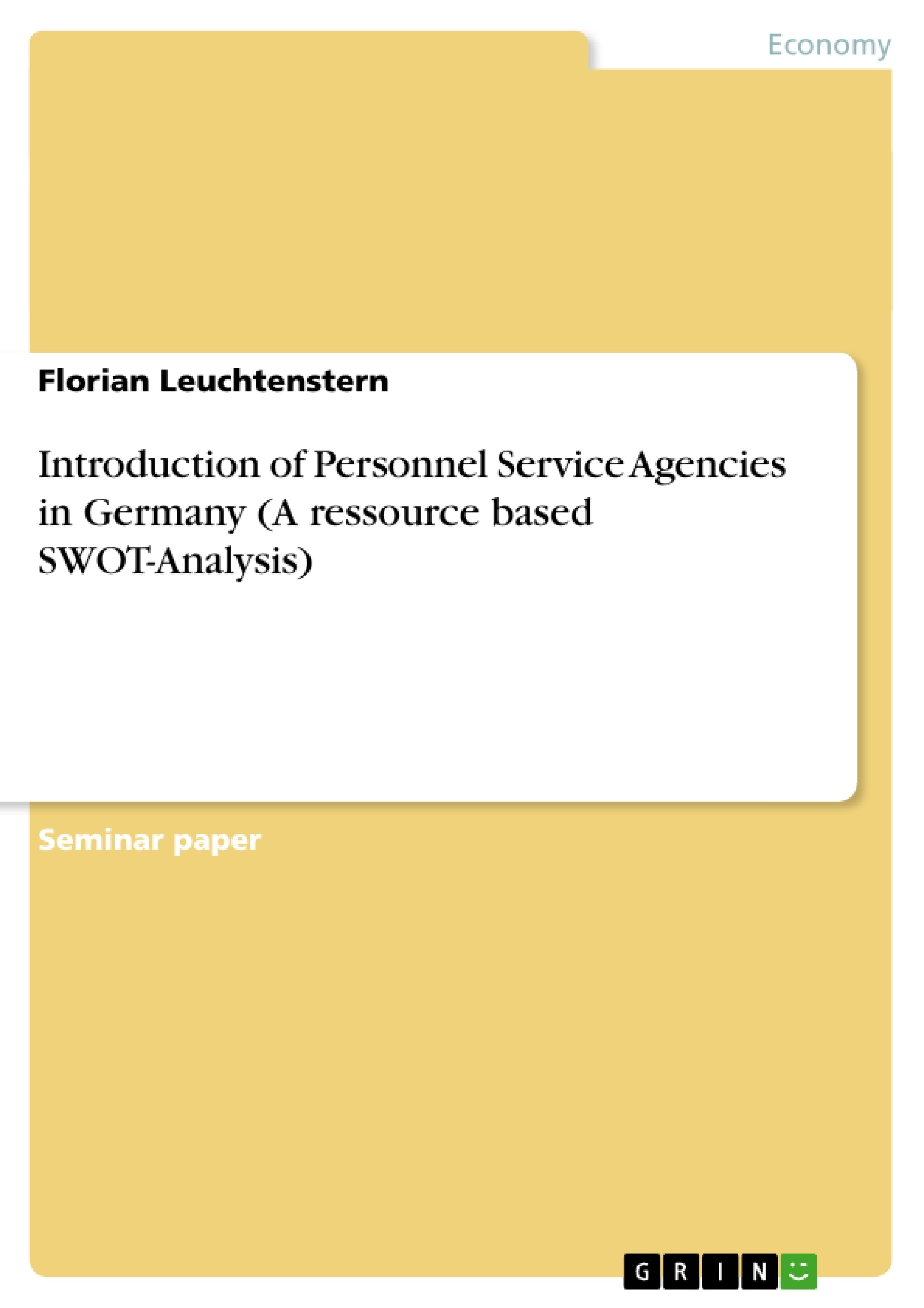It started on 06th of February 2002 with headlines in all major newspapers in Germany.
The German Federal Audit Office demanded the highly centralized Federal
Agency for Labour (Bundesanstalt für Arbeit) in Nuremburg revise their statistics
(Anonymous, 2002a; Anonymous 2002c; Anonymous, 2002d; Baulig C. et. al., 2002).
According to the audit office report 70 per cent or 2.7 million of the successes in the
mediation of employment were faked (Kogelfranz, 2002). The agency, with its 90,000
employees, turned out to be one of the most inefficient but most expensive agencies
of that kind in Europe. After a couple of days the president of the agency Bernhard
Jagoda resigned under the pressure of the federal government and Chancellor
Schröder. His successor Florian Gerster was told to reform the mammoth-agency.
Meanwhile the German government realized that the whole system of labour mediation
had become both too inefficient and too costly. So, among other things Chancellor
Schröder hired Dr. Peter Hartz to head a commission which should work out solutions
for a new German labour market model. The former Volkswagen (VW) executive
and his commission rolled out a concept of 13 modules of innovation (see Figure 1)
in July 2002. This concept called “Modern Services on the labour market” followed
the premise of enabling the unemployed to participate actively in their attempt to get
a new job (Hartz-Commission, 2002b, p.19). That means, on the one hand, to lower
barriers for people who like to show self initiative but were blocked by complicated
labour and tax laws. On the other hand self initiative should become a duty and
unemployed people who do not show enough commitment in their struggle for a new job will have to face dole-cuts. Also in order to set incentives for companies to hire
from the ranks of the unemployed, the commission suggested removing some sacred
cows of employee protection. [...]
Inhaltsverzeichnis (Table of Contents)
- Introduction - The crash of a system
- Summary
- The Situation today
- Key principles of Personnel Service Agencies (PSA)
- Model of operation
- Aims of PSAs
- Organisation of PSA
- Legal implications
- Stadium of implementation
- Foreign precedences
- Method of analysis
- Concept
- SWOT analysis
- Resource based view
- Competitive Forces Paradigm
- The Value Net
- Adaptation to PSAs
- Questionnaire design
- Execution
- Findings
- Agreement with the concept
- Strengths
- Weaknesses
- Opportunities
- Threats
- Conclusion
- Resource based view
- Comparative Forces Paradigm
- The Value Net
- Outlook
Zielsetzung und Themenschwerpunkte (Objectives and Key Themes)
This study aims to analyze the impact of Personnel Service Agencies (PSAs) on the German labor market. By utilizing a resource-based SWOT analysis, the study examines the strengths, weaknesses, opportunities, and threats associated with the introduction of PSAs. This examination aims to provide a comprehensive understanding of the potential benefits and challenges presented by this model.
- The transformation of the German labor market
- The impact of PSAs on the job market
- The strengths and weaknesses of the PSA model
- Opportunities and threats associated with PSAs
- The resource-based view and its application to PSAs
Zusammenfassung der Kapitel (Chapter Summaries)
The introduction sets the stage by discussing the crisis of the German labor market in 2002, leading to the creation of the Hartz Commission and its subsequent reforms. The chapter highlights the inefficiencies of the existing system and the need for a more agile and efficient approach to job mediation.
The following chapter delves into the current situation of the German labor market, outlining the challenges it faces and the role of PSAs in addressing these challenges. It provides a detailed explanation of the key principles, operational models, and objectives of PSAs, emphasizing their potential contributions to the job market.
The chapter dedicated to the method of analysis explores the theoretical frameworks used in this study. The concept section introduces the SWOT analysis, while the resource-based view and the competitive forces paradigm are presented as fundamental analytical tools for examining the impact of PSAs.
Further chapters delve into the specific details of the study's methodology, covering the design of the questionnaire, its execution, and the findings. These chapters analyze the strengths, weaknesses, opportunities, and threats associated with PSAs, providing insights into their potential impact on the German labor market.
Schlüsselwörter (Keywords)
This research focuses on the labor market transformation in Germany, specifically the implementation of Personnel Service Agencies (PSAs). Key concepts explored include the resource-based SWOT analysis, competitive forces paradigm, the Value Net, and the overall impact of PSAs on the German job market.
- Citar trabajo
- Florian Leuchtenstern (Autor), 2003, Introduction of Personnel Service Agencies in Germany (A ressource based SWOT-Analysis), Múnich, GRIN Verlag, https://www.grin.com/document/23281



